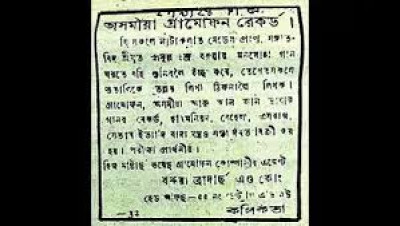Who Was The Artist Of The First Assamese Gramophone Record?



Before this milestone, Assamese songs were confined to live performances in villages, satras, and cultural gatherings. With the advent of the gramophone, the voice of Assamese artists could reach far beyond their immediate audiences, preserving folk traditions and patriotic sentiments for future generations. He recorded several songs with the HMV (His Master's Voice) label in September 1924, making him the first person to do so and bringing Assamese music to a wider audience.
In 1924, Prafulla embarked on a journey to Calcutta to record songs. He took up a job as a mechanical apprentice at the Eastern Bengal Railways factory, earning a modest monthly salary of Rs 30. The sight of an HMV factory on his way to work constantly reminded him of his dream. One day, he approached the factory head and shared his vision, but was met with skepticism about the potential success of the records. After convincing the head, Prafulla was invited to an audition at the company’s rehearsal room on 106 Upper Chitpur Road. At the audition, Prafulla sang two songs: asoma nirupama janani aie in Assamese and arnai shokol rokome kangal korecho garbo korite chur in Bengali. His performance received high praise from the selectors. Within a few days of the audition, Prafulla received a letter from HMV granting him permission to record four Assamese songs - kiyonu pahora asomiya hera sirokal asila swadhin, phulo phulile jonaiye hahile, hriday bidari uthey soto bedonarey and asoma nirupama janani aie.
Cultural Importance of the First Assamese Record:
Prafulla Chandra Borooah’s recording introduced Assam to the era of gramophone music.
It preserved Assamese songs in permanent form, strengthening Assamese cultural identity.
The record inspired future Assamese musicians, paving the way for legends like Bhupen Hazarika and others.